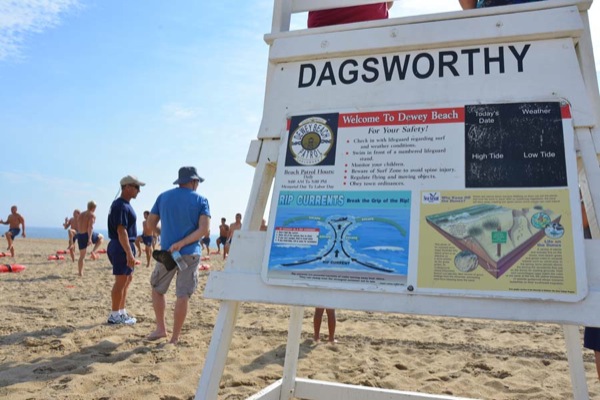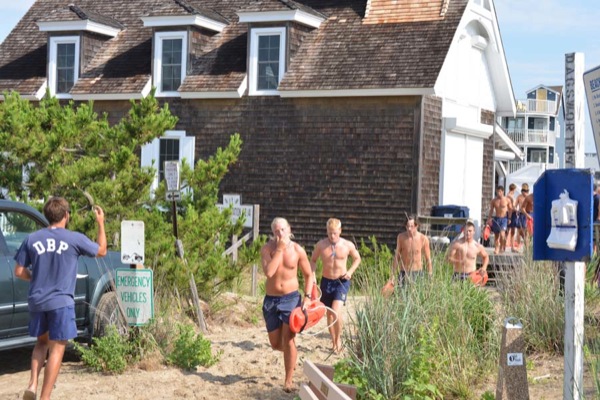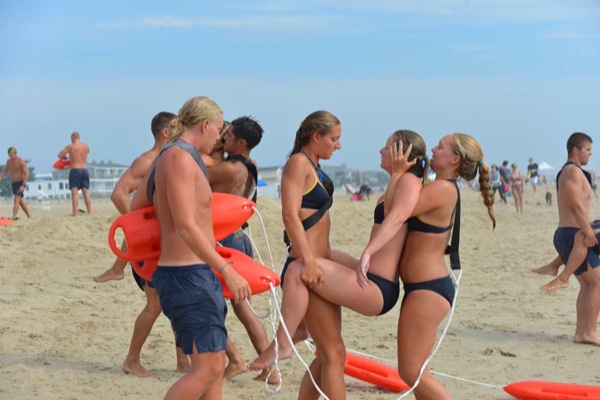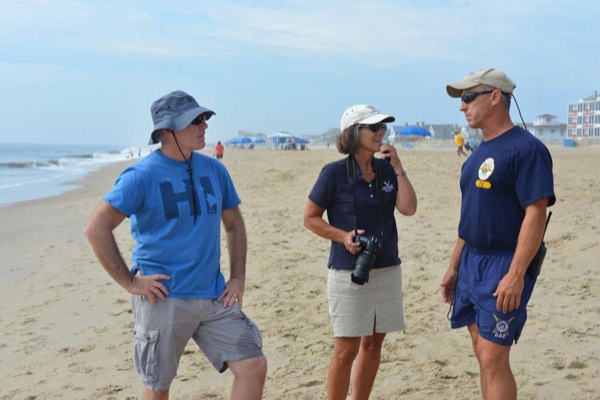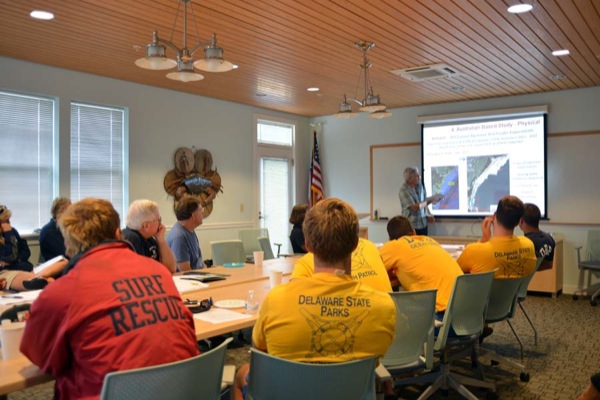Dr. Rip visits Delaware
International rip current expert focuses on effective beach safety education
11:18 a.m., Aug. 5, 2014--Australia’s Rob Brander has built a career around a common coastal catastrophe — the rip current.
In fact, the lifeguard-turned-professor is better known as Dr. Rip for his work in conducting research to better understand rip currents and in educating the public to “break the grip of the rip.”
Campus Stories
From graduates, faculty
Doctoral hooding
Delaware Sea Grant recently hosted a visit by Brander, who spent four days talking with local experts and beach patrol representatives about advances in rip current science as well as challenges and future directions for rip current education.
“Even people who are good swimmers can get caught in rip currents,” Brander says. “But panic overrides everything, so we’re trying to figure out what we can tell people to keep them from panicking.”
Rip currents account for hundreds of drownings and thousands of rescues every year on beaches around the world. In fact, they claim more lives in Australia on average each year than bushfires, floods, cyclones and sharks combined. Similar statistics apply to rip current drownings in the U.S.
Brander believes there is much to learn from people who have survived a rip current, so he is collecting data on their experiences through a survey in an effort to develop better rip current and beach safety education materials.
Beware of Bertha
Wendy Carey, coastal processes and coastal hazards specialist with Delaware Sea Grant, explains that rips are strong, narrow currents that extend from close to the shoreline through the surf zone and out past the line of breaking waves.
“These powerful currents of water that flow away from shore can quickly carry unsuspecting swimmers into deeper water,” she says. “They can occur at any beach with breaking waves and develop due to variations in wave height along the coast. Rip currents often occur at a break in a sandbar where water is funneled out to sea in a narrow channel, or near structures such as piers or jetties. When wave, tide, and beach conditions are just right, rip currents become dangerous for beachgoers.”
Those conditions could become “just right” within the next week along the Delaware coast, with Hurricane Bertha forming in the Atlantic.
“While Bertha’s winds will remain offshore, wind-generated waves will result in rough surf and rip current danger along many east coast beaches,” Carey says. “Beachgoers should swim at lifeguard-protected beaches, pay close attention to local warnings, and talk to on-duty lifeguards about rip currents and other expected surf zone hazards.”
'Break the grip of the rip'
The best protection against rip currents is prevention: Learn to swim, never swim alone, and always swim at lifeguard-protected beaches.
“It’s best to be cautious and assume that rip currents are there even if you can’t see them,” Carey says. “When in doubt, don’t go out.”
If you’re caught in a rip current, Carey offers the following advice:
- Stay calm and don’t panic.
- Don’t swim against the current; try to stay afloat by treading water or swimming parallel to the beach.
- Swim out of the rip along the shore until you feel the current relax, or let the current carry you until its force diminishes.
- When free of the current, swim at an angle away from it toward the beach.
- Call or wave for help if you need assistance.
Minimize your chance of being caught in a rip current by recognizing these signs:
- A break in the surf as waves roll towards shore — this is likely the location of deeper water or a channel in which rip currents are commonly found.
- A line of foam, seaweed, or debris floating out to sea — rip currents carry these and other objects away from shore.
- A difference in water color — murkier from sediments or darker because of greater water depths.
- A channel of churning, choppy water.
To learn more about rip currents, visit the National Oceanic and Atmospheric Administration website and the Delaware Sea Grant website.
About Dr. Rip
International rip current expert Robert Brander is an associate professor in the School of Biological, Earth and Environmental Sciences at the University of New South Wales Sydney. He is well known in Australia as the author of the best-selling book, Dr. Rip’s Essential Beach Book: Everything you need to know about Surf, Sand and Rips. More than 1.2 million people have watched his UNSWTV video, How to Survive Beach Rip Currents, in which he adds purple dye to the surf, a technique he pioneered to reveal the rips.
About Delaware Sea Grant
The University of Delaware was designated as the nation’s ninth Sea Grant College in 1976 to promote the wise use, conservation and management of marine and coastal resources through high-quality research, education and outreach activities that serve the public and the environment. UD’s College of Earth, Ocean, and Environment administers the program, which conducts research in priority areas ranging from aquaculture to coastal hazards.
Article by Diane Kukich
Photos by Lisa Tossey






